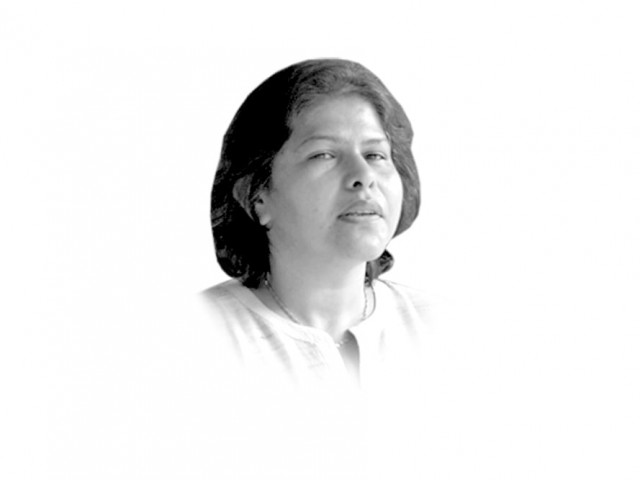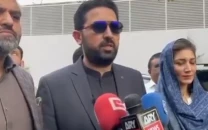Disneyland Pakistan
In this Disneyland of ours, it is so convenient to pin it all on the poor.

The writer is an independent social scientist and author of Military Inc.
This Pakistan is not complicated either because it doesn’t want to bother with the uncleanliness of poverty or the chaos of nationalisms and beliefs. So, why be surprised to see that all the bad Pakistanis in the recently released and much-applauded film, Waar, are lower middle class, while all the good ones are physically modern, speak English and can even be seen in one scene with goblets? This progressive Pakistan has an even simpler and easy to manage politics. We need to build a dam to progress and anyone that opposes it has to be a foreigner (preferably RAW) agent. And we shouldn’t even bother with the fact that a lot of opposition to a large dam is because those displaced as a result of the Mangla and Tarbela Dams were never fully accommodated or compensated, or that there are serious issues of inter-regional distribution of water. But why get into such complexities when you can simply boil it down to poverty or the ill will of the under-privileged and the poor. A good-looking country can’t deal with poverty. However, given the ambition and hunger for strength and power of the upcoming upper-middle class, why waste time with reducing poverty and why not just not look at the poor and poverty.
Recently, at a conference on terrorism, I heard a Pakistani police officer, now working with an international donor agency, talk about how the poor had greater propensity towards violence. A similar conclusion was also made by an Islamabad-based NGO a couple of years ago, linking food insecurity with militancy. The conclusion was that there was violence in Fata and Balochistan because of scarcity of food. The analysis did not even bother to explore the fact that the level of violence in these places is not proportionate to the amount of hunger. Also, what about focusing on the negative role played by the state? But then, why should we forget that simple conclusions are appreciated by even multilateral aid donors. The conclusion that sectarian violence is basically class warfare makes for donor-friendly analysis. Why bother explore that the source of sectarian evil in south Punjab, for instance, was selective manipulation of the poor by some elite groups and families to sort out differences with their rivals. The state machinery and some prominent families had combined their strength during the 1980s to create militancy and encourage sectarian hatred. It certainly doesn’t pay to argue that the issue of terrorism is far more complex than poverty or the poor people.
Since it is all so simply poverty driven, we can also have simpler solutions that aid donors and NGOs can easily fund. The other day, an English-speaking icon of a pir family lectured me on why festivals were good for alleviating poverty of the poor since such events create opportunities. So, instead of opening industries, creating job opportunities, increasing meaningful education that would increase employment opportunity of an individual, we would probably like him to set up temporary kiosks on festivals to earn small change. Perhaps, it is not necessary to bring structural changes in alleviating poverty because why invest in the enemies of the state. Catching up on this formula, donors also find it easy to invest their taxpayers’ money in rebuilding shrines or holding random youth workshops. The former activity is to invest in a reliable class and the latter to help this class sort out their sense of guilt in keeping the poor deprived.
Returning to the issue of terrorism/extremism, it is easy to believe that the poor and his frustration generate all of this because it is difficult for the upper-middle class to admit that their attitudes and perception of religion are equally problematic and contribute to radicalism that, in turn, feeds extremism. A week ago, the imam of the mosque in Westridge, one of Rawalpindi’s posh neighbourhoods, was lecturing people about how Muslims must not respond to greetings by a non-Muslim with a ‘Wailaikumus Assalam’. The mindset created thus can be found in the views of those that claim to be moderate Muslims. They speak English and wear religion on their sleeves. However, their person is seemingly both moderate and modern. This is like Dubai where the Western-liberal and traditional-Eastern culture seems to come together. What is missing in this narrative is the story of how the powerful in Dubai then finance violence elsewhere in the name of protection of their belief system or usurps rights of the dispossessed and not allowing them to rebel.
The new elite in Pakistan are radical in their thinking. They often experiment with these views by manipulating the poor who then tend to get blamed for the violence. The upper-middle class is equally connected with the radical elements which are then used to help the powerful exploit resources. The common denominator between the religious clergy, which is also now part of the elite, and other powerful segments of the state and society is that none want to empower the dispossessed. Tragically, in watching the picture of extremism and violence, we never get to see and recognise the real faces. In this Disneyland of ours, it is so convenient to pin it all on the poor.
Published in The Express Tribune, December 26th, 2013.
Like Opinion & Editorial on Facebook, follow @ETOpEd on Twitter to receive all updates on all our daily pieces.















COMMENTS
Comments are moderated and generally will be posted if they are on-topic and not abusive.
For more information, please see our Comments FAQ